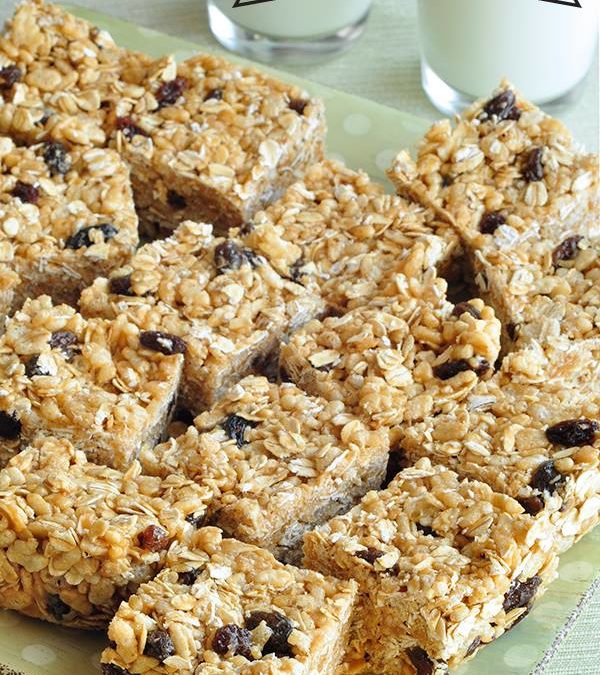
by Guest | Feb 9, 2022 | Move Well
It’s official – 6 more weeks of winter. Or at least that’s what Punxsutawney Phil, the famous groundhog, concluded when he saw his shadow on February 2nd. The good news is that we have reached the point in the year where the days are starting to get a little bit longer. In fact, between now and daylight savings on March 13th we will have gained over an hour and a half of additional daylight!
And yet, we are still in the midst of winter weather – rain, wind, ice, fog, and maybe the occasional snowflake. It can be difficult to find any excitement in stepping outside to chilly air and sprinkling raindrops, but building a little bit of movement and physical activity into each day can have profound effects on how we feel. Physical activity not only improves balance and helps strengthen bones, but it also releases chemicals in your brain that boost mood, self-esteem, and concentration.
So what can you do to stay active during winter weather? We’ve collected a few tips below:
1. Gather Waterproof Gear
You don’t need super-fancy items, but a waterproof jacket can make a world of difference when the rain is coming down. It’s also important to have a few comfortable layers of clothing that can be easily added or removed as the temperature fluctuates. (It’s worth noting that cotton traps moisture once it’s wet, either with sweat or rain, and this will actually make you feel colder if you’re using it as your base layer. Check your tags for a lightweight polyester, wool, or polypropylene item to wear closest to your skin).
2. Monitor the Weather (and plan ahead!)
Weather forecasts are often available a few days in advance, and a quick glance on your phone will usually give you a decent idea of which day might be warmer or when there might be a break in the rain during a drizzling afternoon.
3. Start Simple
A stroll around your neighborhood or a quick walk through a park or along the beach is a great way to stretch out after a long day. You might try decompressing by listening to music, a podcast, or calling a loved one while you walk. For ideas on places to get moving, visit https://tillamookcountywellness.org/move-well/great-places-to-get-moving/
4. Notice the Nature
There’s something about stepping outside during a break in the clouds and being able to smell the rainstorm that has just ended. It’s amazing how taking a moment to appreciate the world around you can lift your mood.
5. Then Try Something New!
There are endless hikes and trails to explore in Tillamook County, you can visit https://tillamookcoast.com/recreation-map/ for inspiration in finding a new place to explore. Or try your hand at clamming or crabbing on the coast – just make sure to get a shellfish license and check local regulations here: https://myodfw.com/crabbing-clamming
Without a doubt, there will be days where the weather is just too miserable to enjoy. These might be better moments to enjoy a hot cup of tea and watch the rain fall. If you are still hoping to move a bit, there are plenty of options:
- Try an online workout (the YMCA has class recordings or you can find videos on YouTube)
- Finish those household chores (vacuuming counts as both cleaning and exercise — a win-win situation)
- Blast music and dance (because we all need this occasionally)
And before we know it, spring will be just around the corner 🙂
Other wellness questions? Email us at info@tillamookcountywellness.org. For more local health and wellness information, visit www.tillamookcountywellness.org or follow Tillamook County Wellness on Facebook and Instagram.

by Guest | Feb 9, 2022 | Lunch & Snack Recipes, Recipes
Prep Time: 15 minutes
Cook Time: 5 minutes
Ingredients
- ½ cup honey (see Notes)
- 1 cup peanut butter
- 2 cups rice cereal
- 2 cups quick oats
- 1 cup raisins or other dried fruit
Directions
- Wash hands with soap and water.
- In a saucepan, bring honey to a boil.
- Reduce heat to low and stir in peanut butter.
- Add cereal, oats and raisins; mix well. Remove from heat
- Lightly grease an 8×8-inch baking pan. Press mixture into pan. When cool, cut into 16 bars.
- Store in an airtight container for up to a week.
Notes
- Try this recipe with 4 cups of unsweetened cereal flakes instead of the rice cereal and oats.
- Honey is not recommended for children under 1 year old.
- To avoid peanuts or peanut butter, try sunflower seeds or sunflower seed butter.
Photo & Recipe Source: https://www.foodhero.org/recipes/peanut-butter-cereal-bars

by Guest | Feb 2, 2022 | Recipes
Prep Time: 15-20 minutes
Cook Time: 25 minutes
Ingredients
- 1 teaspoon vegetable oil
- 1 cup chopped onion
- 2 cloves garlic, minced or 1/2 teaspoon garlic powder
- 1 can (10 ounces) red chile sauce (or 1 can (8 ounces) tomato sauce + 2 to 4 Tablespoons chili powder)
- 3 cups low-sodium chicken broth
- 1 teaspoon cumin
- 1 teaspoon oregano
- 1 can (15 ounces) hominy, drained and rinsed (1 ¾ cup)
- 2 cups cooked, shredded chicken
Toppings (optional)
- Shredded cabbage or lettuce
- Sliced radishes
- Chopped onion
- Lime
- Chopped cilantro
- Chopped or sliced avocado
Directions
- Wash hands with soap and water.
- In a large saucepan on medium heat, sauté onion in oil until it begins to soften, about 5 minutes. Add garlic and continue cooking for 1 minute.
- Add the chile sauce, broth, cumin, oregano and hominy to the onion and bring to a boil, stirring. Reduce heat and simmer uncovered for 10 minutes. Stir in the chicken and heat through, about 2 minutes.
- Spoon into shallow bowls and add toppings as desired.
- Refrigerate leftovers within 2 hours.
Notes
- A rotisserie chicken makes this recipe quick to fix.
- No red chile sauce? You can also use 1 1/4 cups enchilada sauce.
- Thanks to the Food Hero Latinx work group for this recipe.
Photo & Recipe Source: https://www.foodhero.org/recipes/pozole-chicken

by Guest | Feb 2, 2022 | Being Well
Social media is a mixed bag of sorts. It can lead to poor sleep quality, and fuel mental and emotional fatigue. It can be a very toxic experience depending on your perspective, how much time you spend on it, who you follow, and how you choose to interact. It can also be a wonderful tool which connects you to the people you love, niche hobby groups, meet-up opportunities, cultural awareness, and so much more! It’s a truly powerful source of communication. The speed in which the information, thoughts, feelings, and concepts within the content is exchanged can quickly overwhelm and exhaust anyone. It’s healthy to sometimes step back and take a break from the virtual world for a period. There are other ways to engage online which might help lessen the stress you’re feeling from the content you consume.
Being intentional about who you follow can make or break your experience online. There is so much aggression and misinformation, curating your feed will change the way you see the world. Follow users who matter to you and unsubscribe from those who cause you undue stress. Some differences in opinion are totally healthy and normal, but if those you follow engage in a way that is disrespectful, what are you gaining from that connection?
Find stimulating content creators that reflect your unique interests. This can help you to meet others virtually and build a real connection over time! You might find a local group meet-up to make friends in person. Social media is intended to foster connection and collaboration, it’s all about how you use it.
On the other hand, seek out accounts from people with diverse interests and perspectives. Find people from cultures completely different than your own. Find people who don’t look or think anything like you and try to put yourself in their shoes. Social media functions by putting us in a labeled box and providing increasingly tailored information to us based on our activity. Building cultural awareness is an intentional process but can lead to unbelievable opportunities and insights.
Sometimes it can seem like there are insurmountable divides in our society, and closing those gaps starts when we see the world through someone else’s eyes. Social media allows us to conveniently see and interact with perspectives from all over the world for the first time in human history. It gets a bad rep, but as with any technology it’s all about how it’s used.
Phones nowadays have locks and filters that can limit the amount of time we spend on social media apps. They have analytic trackers that can show you your usage history. These are valuable tools at your disposal! The distraction of a never-ending news feed can be alluring, but the apps benefit when you lose track of time. Setting timers on your phone will put the power back into your hands. Taking a break from social media all together is a wonderful chance to recalibrate and connect back in with yourself.
Social media should be used to your advantage, not to take advantage of you. Hopefully these tips can help you to feel more in control over your feeds and encourage you to try something new!
AUTHOR: Erin Washbon, OHSU Dietetic Intern
Other wellness questions? Email us at info@tillamookcountywellness.org. For more local health and wellness information, visit www.tillamookcountywellness.org or follow Tillamook County Wellness on Facebook and Instagram.

by Guest | Jan 19, 2022 | Being Well
Hoping to slow down and embrace living in the moment this year? After another unsettling year, many of us are looking to regroup and find a “new normal” as we enter into the new year. Dedicating a few minutes a day to mindfulness can help reduce stress, increase calmness and clarity, and promote happiness – and who couldn’t use a little more of that in 2022?
Too often, we find ourselves in a frenzied, unhappy and unsettled state-of-mind. Many people simply feel there are not enough hours in a day. Cultural norms tell us that multitasking is good, that “busy-ness” is both normal and noble. People are told to learn to say “no” but find it difficult because everything seems to be of equal and vital importance.
This constant state of activity and worry places a heavy toll on both the mind and the body. It can contribute to anxiety, depression, addiction and damaged relationships. An overloaded nervous system, in a constant state of fight-or-flight, produces chronic stress that has far-reaching effects.
Enter Mindful-Based Stress Reduction. Through a regular practice of cultivating awareness of experiences and sensations and learning to view them without judgement, things begin to fall into place. Priorities shift and emerge. Our sensory system remains calm amidst a stressful day. We experience life with a sense of clarity and objectivity.
We can only change something if we know what the root of the problem is. A mindfulness practice strips away every voice – including our own. We become an interested observer of what is happening in the body and the mind. It is like watching a movie with flashbacks and foreshadowing. We are “let in” on the back story that explains the characters’ behavior.
The practice itself can be as simple as spending five minutes each day, sitting quietly, breathing deeply and simply being present with acceptance. We accept who we are, where we are, just as we are in that exact moment. Thoughts may come and go and that’s okay. Often, they provide clues as to the source of our anxiety, past hurts, and frustrations. Rather than stuff them or block them, we allow these thoughts and feelings to appear. We greet them at the door but we don’t invite them to stay.
While a regular, defined practice is ideal, we can incorporate mindfulness into everyday activities. We can catch ourselves reacting to a situation and tune into it through our mindfulness viewer. Research shows that awareness in and of itself is enough to alter patterns of behavior. It takes on a snowball effect. The more we catch ourselves, the more quickly we hit the reset button until the brain recognizes the situation as non-threatening and resets itself. It is important to remember that, when we catch ourselves in an unhealthy habit, we do not attach any negative self-criticism. Acceptance without judgement is key. Setting an intention for healthier behaviors and self-healing are equally important.
As with any new task, the more often we practice the new habit, the more automatic it becomes. And just like building our muscles or mental focus, regular practice creates a new default. Two important benefits of a mindfulness practice are nonreactivity and self-regulation. Without expressly working to develop them, these two traits emerge. We often only realize it when we catch ourselves remaining calm in a situation that would have generated fear or anger before.
Mind-body classes such as Qigong, Tai Chi and Yoga include a component of mindfulness. Locally, class schedules can be found at the Tillamook Family YMCA or in the Tillamook Bay Community College course catalog under the community education, Fitness & Health section.
To learn more, check out the New York Times “How to Meditate” for mindfulness and meditation basics, at-home exercises, and strategies for any challenges you may face. If you are looking for guided mindfulness videos, there are many worth exploring online. Try checking out the “Goodful” page on YouTube for meditations, or look for the “Calm” or “Headspace” pages on YouTube, the app store, and streaming platforms (you can find “Headspace Unwind Your Mind” on Netflix or “A World of Calm” on HBO Max).
AUTHOR: Tillamook County Wellness
For more local health and wellness information, follow Tillamook County Wellness on Facebook, Instagram and Twitter.





